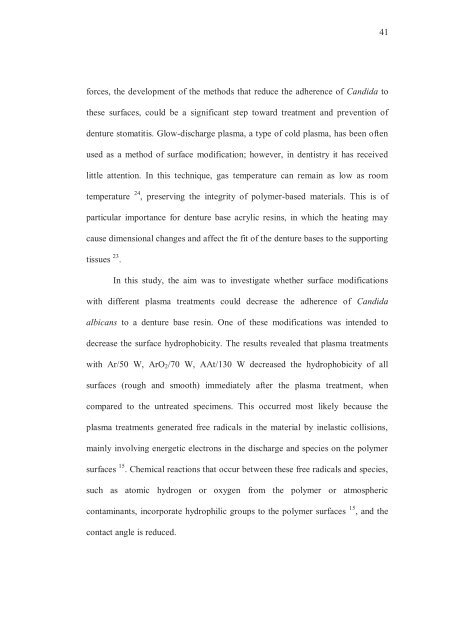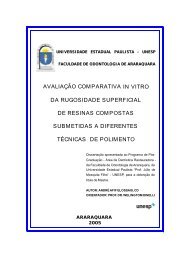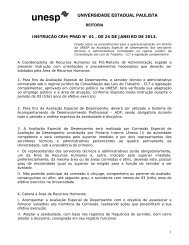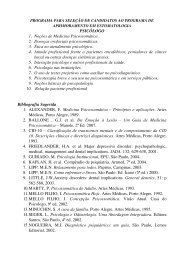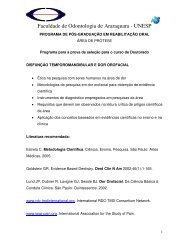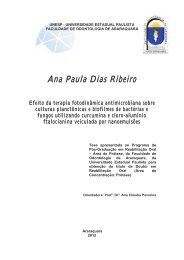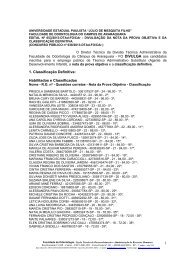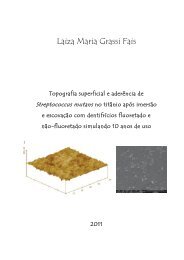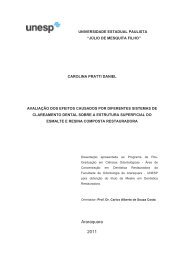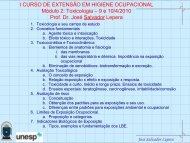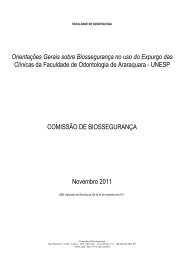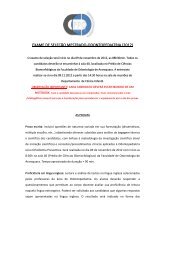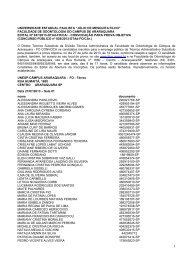universidade de são paulo - Faculdade de Odontologia - Unesp
universidade de são paulo - Faculdade de Odontologia - Unesp
universidade de são paulo - Faculdade de Odontologia - Unesp
You also want an ePaper? Increase the reach of your titles
YUMPU automatically turns print PDFs into web optimized ePapers that Google loves.
41<br />
forces, the <strong>de</strong>velopment of the methods that reduce the adherence of Candida to<br />
these surfaces, could be a significant step toward treatment and prevention of<br />
<strong>de</strong>nture stomatitis. Glow-discharge plasma, a type of cold plasma, has been often<br />
used as a method of surface modification; however, in <strong>de</strong>ntistry it has received<br />
little attention. In this technique, gas temperature can remain as low as room<br />
temperature 24 , preserving the integrity of polymer-based materials. This is of<br />
particular importance for <strong>de</strong>nture base acrylic resins, in which the heating may<br />
cause dimensional changes and affect the fit of the <strong>de</strong>nture bases to the supporting<br />
tissues 23 .<br />
In this study, the aim was to investigate whether surface modifications<br />
with different plasma treatments could <strong>de</strong>crease the adherence of Candida<br />
albicans to a <strong>de</strong>nture base resin. One of these modifications was inten<strong>de</strong>d to<br />
<strong>de</strong>crease the surface hydrophobicity. The results revealed that plasma treatments<br />
with Ar/50 W, ArO 2 /70 W, AAt/130 W <strong>de</strong>creased the hydrophobicity of all<br />
surfaces (rough and smooth) immediately after the plasma treatment, when<br />
compared to the untreated specimens. This occurred most likely because the<br />
plasma treatments generated free radicals in the material by inelastic collisions,<br />
mainly involving energetic electrons in the discharge and species on the polymer<br />
surfaces 15 . Chemical reactions that occur between these free radicals and species,<br />
such as atomic hydrogen or oxygen from the polymer or atmospheric<br />
contaminants, incorporate hydrophilic groups to the polymer surfaces 15 , and the<br />
contact angle is reduced.


